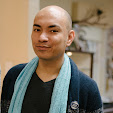 While I was off on my relative radio-silence last week, I dropped by 3rdWard for a class with Max Goodman on photo etching! It was really exciting and brought back all kinds of memories of when I learned intaglio printing and the etching process several years ago. To the left are a few of the samples I made during the class. They're really simple and basic as it was a techniques class and it was the first time that they offered the course. The class was a lot of fun and I'm dreaming up all the many projects I'm going to make!
While I was off on my relative radio-silence last week, I dropped by 3rdWard for a class with Max Goodman on photo etching! It was really exciting and brought back all kinds of memories of when I learned intaglio printing and the etching process several years ago. To the left are a few of the samples I made during the class. They're really simple and basic as it was a techniques class and it was the first time that they offered the course. The class was a lot of fun and I'm dreaming up all the many projects I'm going to make!
Monday, April 20, 2009
Photo Etching...
 While I was off on my relative radio-silence last week, I dropped by 3rdWard for a class with Max Goodman on photo etching! It was really exciting and brought back all kinds of memories of when I learned intaglio printing and the etching process several years ago. To the left are a few of the samples I made during the class. They're really simple and basic as it was a techniques class and it was the first time that they offered the course. The class was a lot of fun and I'm dreaming up all the many projects I'm going to make!
While I was off on my relative radio-silence last week, I dropped by 3rdWard for a class with Max Goodman on photo etching! It was really exciting and brought back all kinds of memories of when I learned intaglio printing and the etching process several years ago. To the left are a few of the samples I made during the class. They're really simple and basic as it was a techniques class and it was the first time that they offered the course. The class was a lot of fun and I'm dreaming up all the many projects I'm going to make!
Subscribe to:
Post Comments (Atom)

















5 comments:
Ooh! I am so intrigued by this! I have been hunting down information on etching online, but I am too chicken to jump into the chemical end of the pool unsupervised...so I am taking a class at Bead & Buttom show all about etching that will either erase my fears along with a few layers of metal, or show me that I should not dive into this. So cool! Can't wait to see what you do with this new knowledge.
Enjoy the day!
Erin
Stephanie Lee has written a wonderful book and covers several projects based on etching...do pick up her book it is called Salvaged Semiprecious. I loved it!
Hey Erin!
Have fun! It's a good process to know. I used to make itaglio prints a long time ago and was surprised how similar the process is. Instead of working on silver or copper, we used to etch zinc plates. The main difference besides the chemicals is that the photo etching paper is relatively new. Have fun!
Hey Rupa! I have Stephanie's book and Jane Wynn's book. Both have etching techniques. The main difference is that the photo etching process can achieve a more standardized, reproducable, and finer detail etch. Jane's book uses a stamping technique, and Stephanie's uses a transfer paper and acetone. However, acetone has been known to cause cancer with a lot of exposure and smells something horrible.
The technique that I covered in Max's class is very similar to Stephanies, but uses slightly different materials. We also covered chemical milling, which takes etching one step further.
The samples I posted aren't really the best examples of the technique. But they were fun and it was good to get back in the process after several years.
nice!
Post a Comment